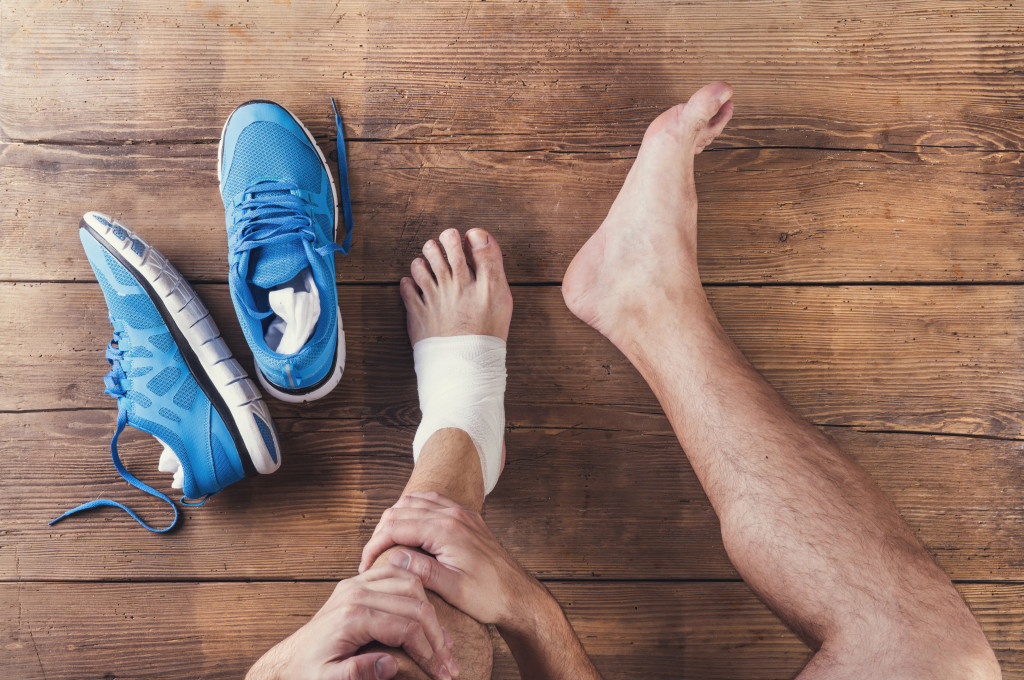As an athlete, suffering from an injury can feel like the end of the world. Not only does it put a damper on your game, but it can also lead to frustration and even depression. Many athletes feel like they are never going to be able to recover fully and get back to playing the sport they love. The good news is that there are things you can do to help yourself recover faster from a sports injury. Here are a few tips:
1. Get enough rest.
When you’re injured, your body needs time to heal. That means getting plenty of rest. It’s tempting to push through the pain but resist the urge. Getting more sleep will help you heal faster. According to the Mayo Clinic, you should aim for eight hours of sleep a night. This may be difficult if you’re used to training late into the night, but giving your body the rest it needs is essential.
Many people also find that taking a nap during the day can be helpful. If you can’t get eight hours at night, try to take a 30-minute nap during the day. Don’t go overboard, though. Too much sleep can have the opposite effect and make you feel sluggish.
2. Consider therapy.
Some injuries can benefit from professional physical therapy. A therapist can help you strengthen the muscles around the injured area and reduce pain and inflammation. The therapy involves exercises specifically designed to help you heal. Many athletes find that therapy speeds up recovery and helps them get back to playing sooner.
If your insurance covers it, therapy is definitely worth considering. You can even research online to find exercises you can do at home. However, check with your doctor before starting any new exercise routine, especially if you’re still in pain.

3. Ice the area.
Ice helps reduce inflammation and pain. Apply ice for 20 minutes at a time, several times a day. You can use a reusable ice pack or even a bag of frozen vegetables wrapped in a towel. Just be sure not to put the ice directly on your skin as it can cause frostbite.
Some people think a warm compress is helpful, but according to the Mayo Clinic, ice is better for most injuries. While heat can feel good, it can increase inflammation. So, save the heat for after the swelling has gone down. You can then alternate between heat and cold to help relieve pain.
4. Use compression.
Compression also helps with inflammation and pain. You can use an elastic bandage or compression sleeve to apply compression to the injured area. This can help reduce swelling and discomfort. You can also try using kinesiology tape. This particular tape is designed to provide support and compression without restricting movement.
Just make sure not to wrap it too tightly—you should be able to slip a finger under the bandage. Many athletes find that compression clothing is helpful for recovery. You can even find compression socks and sleeves specifically designed for different body areas. Try wearing them during the day or even when you sleep.
5. Do range-of-motion exercises.
Once the pain has decreased, you can start doing range-of-motion exercises to prevent stiffness in the joint. Slow and gentle movements are best at first — eventually, you’ll be able to increase the intensity. Just be sure not to push yourself too hard — if something hurts, stop. Don’t try to tough it out.
Doing range-of-motion exercises is especially important for injuries that affect the joints, such as ankle sprains. But, it can also be helpful for other injuries, such as muscle strains. These exercises help keep the joint flexible and prevent stiffness.
6. Take anti-inflammatory medication.
If ice and compression aren’t enough to reduce the swelling, you can try over-the-counter anti-inflammatory medication, such as ibuprofen. Just be sure to follow the directions on the package. You shouldn’t take these medications for more than a few days in a row as they can have side effects, such as stomach upset.
If the pain is severe, your doctor may prescribe a stronger medication. However, these should only be used as directed. If you’re still in pain after a few days, follow up with your doctor.
These tips can help you recover from a sports injury more quickly so that you can get back in the game as soon as possible. Be sure to get plenty of rest, ice the area, use compression, keep the site elevated, and do range-of-motion exercises according to your doctor’s instructions. Always check with your doctor before beginning any new exercise routine, and never push yourself too hard. With a little time and care, you’ll be back on your feet in no time.


